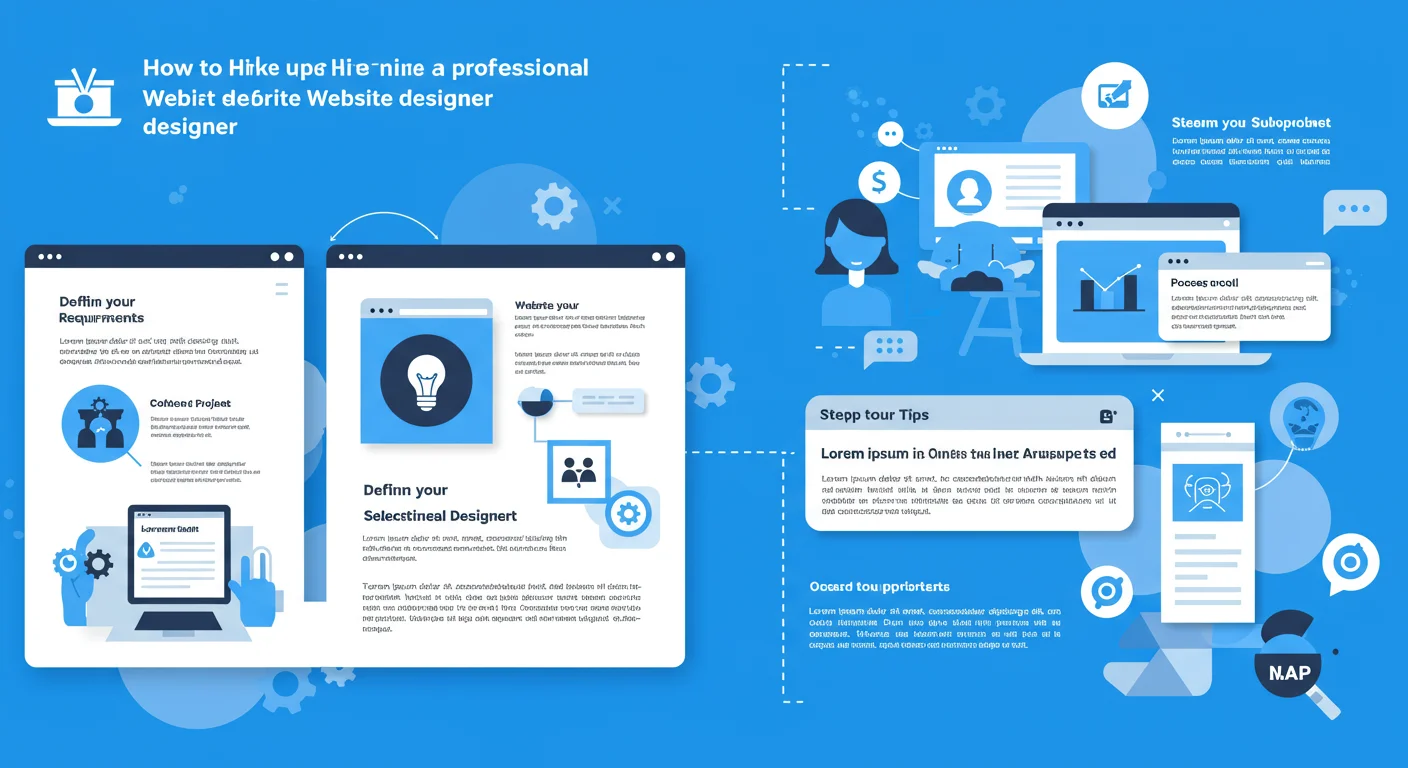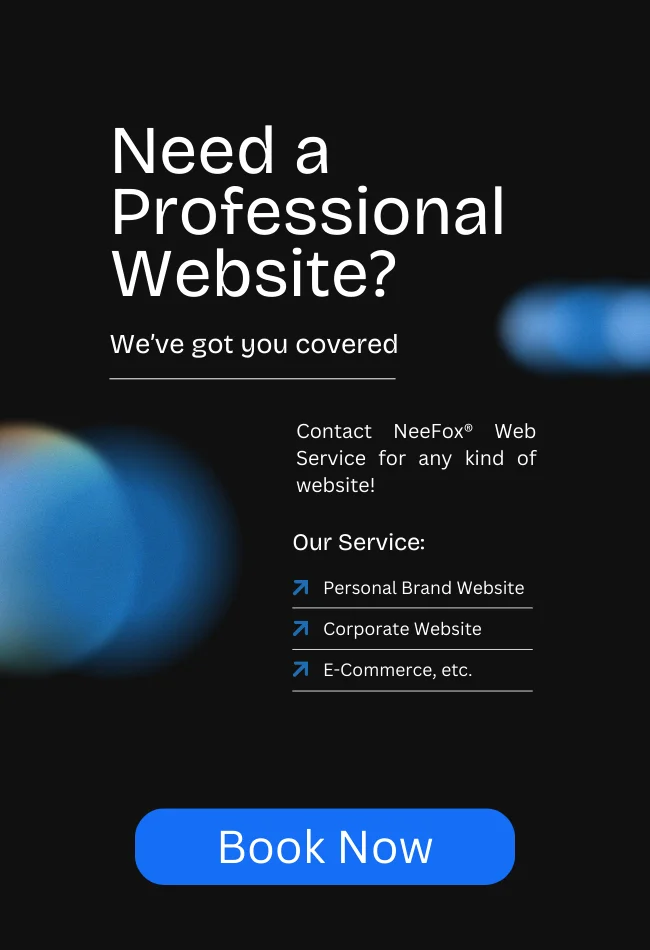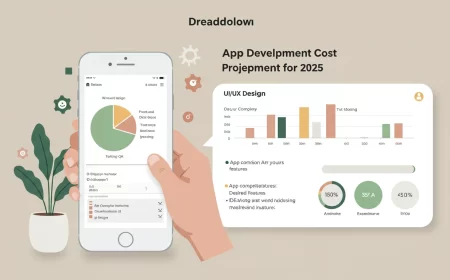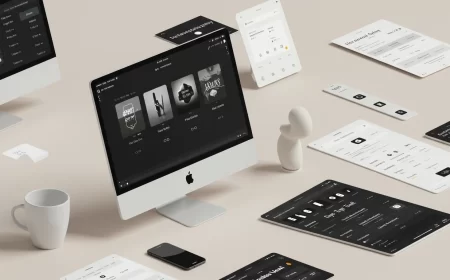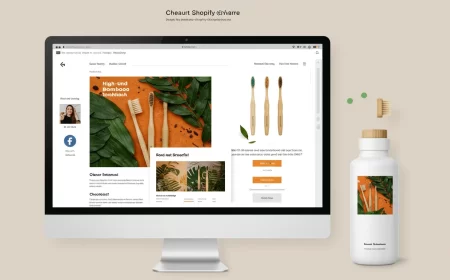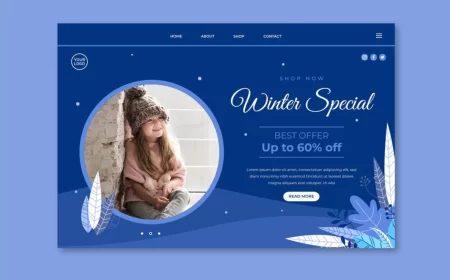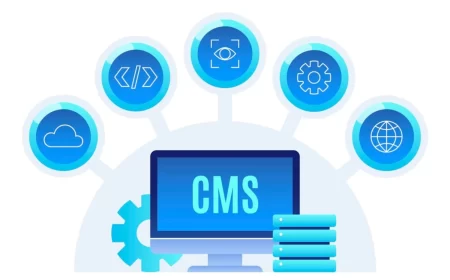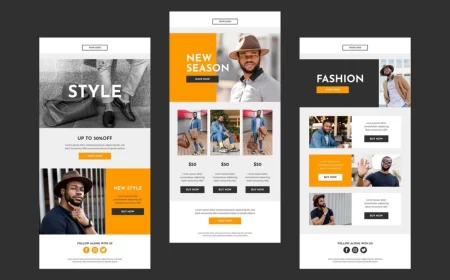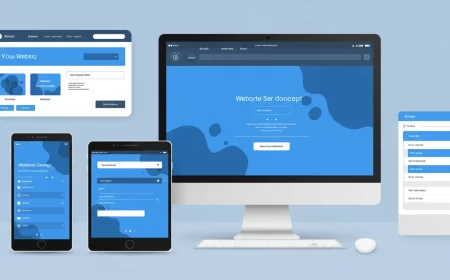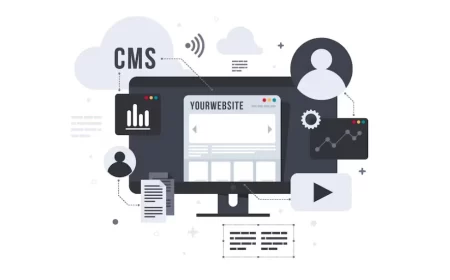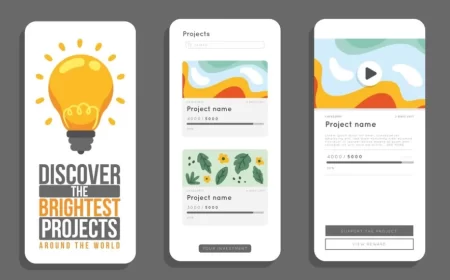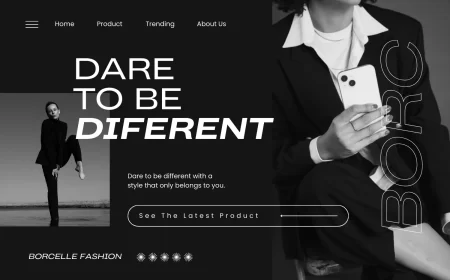In today’s dynamic digital landscape, a compelling online presence is no longer just an advantage—it’s a necessity. Businesses and individuals alike are constantly seeking ways to create stunning, high-performing websites that stand out. This is where the expertise of a Webflow website designer becomes invaluable. Webflow has emerged as a powerful platform that bridges the gap between design freedom and robust development, allowing designers to build custom, responsive, and visually rich websites without writing traditional code.
But what exactly does a Webflow website designer do, and why should you consider working with one? This comprehensive guide will delve into the multifaceted role of these creative professionals, explore the significant benefits they bring to any web project, highlight the key skills that define their craft, and offer insights into their design process. Whether you’re looking to hire a Webflow expert or considering a career in this exciting field, understanding the nuances of a Webflow website designer’s work is essential for navigating the modern web.
What is a Webflow Website Designer?
A Webflow website designer is a specialized professional who leverages the Webflow platform to conceptualize, design, and develop responsive websites. Unlike traditional web designers who might hand off designs to a developer for coding, a Webflow designer often combines both roles, directly translating visual concepts into functional web experiences within Webflow’s intuitive visual interface.
They are not just graphic designers; they are architects of the web, understanding both the aesthetic and structural components necessary for a successful site. They use Webflow’s powerful tools to craft custom layouts, implement intricate animations, manage dynamic content through the CMS, and ensure optimal performance and search engine visibility—all without the need for extensive manual coding in HTML, CSS, or JavaScript. While they might possess coding knowledge to implement highly custom interactions, their primary strength lies in mastering Webflow’s visual development environment to achieve pixel-perfect designs with clean, semantic code output.
Why Choose a Webflow Website Designer?
Opting for a Webflow website designer brings a distinct set of advantages that can significantly impact the success and efficiency of your web project.
1. Unparalleled Design Freedom and Precision
Webflow empowers designers with an incredible level of control over every visual element. Unlike template-based builders that can feel restrictive, a Webflow website designer can create truly custom designs from scratch. They can manipulate layouts with precision, implement unique typography, and craft bespoke animations and interactions that bring a brand’s vision to life. This means your website won’t look like a generic template; it will be a unique digital representation of your brand identity, meticulously crafted to your specifications.
2. Faster Development and Launch Times
One of Webflow’s most compelling benefits is its ability to streamline the design-to-development pipeline. Because the designer is often also the developer, there’s no need for constant back-and-forth between different teams or for developers to interpret design mockups. A skilled Webflow website designer can rapidly prototype, iterate on designs, and build fully functional websites much faster than traditional methods. This accelerated workflow translates to quicker project delivery and a faster time-to-market for your product or service, giving you a competitive edge.
3. Built-in Responsiveness and Performance Optimization
In today’s multi-device world, a website must look and function flawlessly on desktops, tablets, and smartphones. Webflow is built with responsive design at its core, and a Webflow website designer is adept at ensuring your site adapts seamlessly to all screen sizes. Furthermore, Webflow generates clean, semantic code and offers integrated performance tools, including a global Content Delivery Network (CDN) and lazy loading for images. This means websites built by a Webflow expert are inherently fast and optimized for loading times, which is crucial for user experience and search engine rankings.
4. Robust CMS for Easy Content Management
Many businesses need to update their website content regularly, whether it’s blog posts, product listings, or team member profiles. Webflow’s powerful Content Management System (CMS) allows a designer to create dynamic content structures that are incredibly easy for clients to manage. Once the designer sets up the collection fields and templates, content creators can add, edit, and publish content through a user-friendly editor, without ever touching the design interface. This empowers you to keep your site fresh and relevant without needing a designer for every small update.
5. SEO-Friendly Foundations
Search engine optimization (SEO) is paramount for online visibility. A proficient Webflow website designer understands SEO best practices and builds websites with search engines in mind. Webflow provides native SEO features, allowing for custom meta titles and descriptions, automatic sitemap generation, structured data implementation, and easy setup of 301 redirects. This clean code output and integrated SEO control help ensure your website is well-indexed and ranks effectively on search engine results pages, attracting valuable organic traffic.
6. Cost Efficiency in the Long Run
While the initial investment in a custom Webflow design might seem comparable to other solutions, the long-term cost efficiency can be significant. Faster development cycles reduce labor costs, and Webflow’s integrated hosting and maintenance-free updates minimize ongoing expenses often associated with plugin management, security patches, and server upkeep in other CMS platforms. A well-built Webflow site is a future-proof asset that can save you money and headaches over time.
Key Skills of an Effective Webflow Website Designer
To excel in this specialized field, a Webflow website designer possesses a unique blend of creative, technical, and strategic skills.
1. Strong Design Principles and UI/UX Expertise
At their core, Webflow designers are visual artists. They must have a deep understanding of fundamental design principles, including:
- Visual Hierarchy: Guiding the user’s eye to the most important information.
- Layout and Composition: Arranging elements for balance, harmony, and readability using grid systems and white space.
- Color Theory: Selecting palettes that evoke the right emotions and ensure accessibility.
- Typography: Choosing fonts and styling text for optimal readability and brand consistency.
- Responsiveness: Designing layouts that adapt flawlessly to various screen sizes and devices.
Beyond aesthetics, a top-tier Webflow designer is also a User Interface (UI) and User Experience (UX) specialist. They focus on creating intuitive navigation, clear calls-to-action, and seamless user journeys that make the website enjoyable and effective for visitors. This involves understanding user behavior, conducting usability testing, and iterating on designs based on feedback.
2. Mastery of the Webflow Platform
This is the most obvious, yet crucial, skill. An effective Webflow website designer is intimately familiar with every facet of the Webflow Designer interface, including:
- Structure and Elements: Proficiently using HTML elements, classes, and components.
- Styling (CSS): Applying styles visually and understanding how Webflow translates them into clean CSS.
- Interactions and Animations: Bringing designs to life with micro-interactions, scroll-based animations, and complex multi-step sequences.
- CMS and Collections: Setting up dynamic content, creating collection pages, and managing content effectively.
- E-commerce: Building and customizing online stores within Webflow.
- Forms: Designing and integrating custom forms.
- Responsive Design Tools: Utilizing breakpoints and responsive settings to ensure cross-device compatibility.
3. Understanding of HTML, CSS, and JavaScript Fundamentals
While Webflow is a “no-code” tool, a strong Webflow website designer often has a foundational understanding of the underlying web languages: HTML (for structure), CSS (for styling), and JavaScript (for interactivity). This knowledge allows them to:
- Debug More Effectively: Understand where issues might arise and how to troubleshoot them.
- Implement Custom Code: For highly specific functionalities or third-party integrations not natively supported by Webflow.
- Optimize Performance: Make informed decisions about asset loading, class structuring, and overall site efficiency.
- Communicate with Developers: If a project requires advanced custom development beyond Webflow’s capabilities, they can effectively collaborate with traditional developers.
4. SEO Best Practices and Implementation
A skilled Webflow designer integrates SEO considerations from the ground up. They know how to:
- Structure content with proper heading tags (H1, H2, H3).
- Optimize meta titles and descriptions for search engines.
- Implement clean URL structures.
- Add descriptive alt text to images.
- Ensure fast page load times.
- Set up 301 redirects for any URL changes.
- Utilize Webflow’s native SEO settings and potentially integrate with external SEO tools.
5. Problem-Solving and Adaptability
Web design projects often come with unique challenges. A great Webflow website designer is a strong problem-solver, capable of finding creative solutions to design constraints, technical hurdles, or client requests. They are also adaptable, staying updated with Webflow’s continuous platform updates, new features, and evolving web design trends.
6. Communication and Project Management
Effective communication is paramount. A Webflow designer must be able to:
- Listen Actively: Understand client needs, goals, and brand identity.
- Translate Ideas: Convert complex requirements into clear design concepts.
- Provide Updates: Keep clients informed throughout the design and development process.
- Manage Expectations: Clearly define project scope, timelines, and deliverables.
For freelance designers or agency leads, basic project management skills—like setting timelines, managing tasks, and collaborating with other team members (e.g., copywriters, marketers)—are also highly beneficial.
The Webflow Design Process: How a Designer Works
The process a Webflow website designer follows typically involves several distinct phases, ensuring a structured and efficient approach to building your site.
- Discovery & Strategy: This initial phase is all about understanding your business, target audience, goals, and competitive landscape. The designer will conduct research, gather requirements, and help define the website’s purpose and key functionalities. This often involves creating user personas and a detailed creative brief.
- Information Architecture & Wireframing: Before diving into visual design, the designer will map out the website’s structure. This includes creating a sitemap (to define page hierarchy) and wireframes (low-fidelity blueprints of individual page layouts). Wireframes focus on content placement and functionality, not aesthetics, ensuring a logical user flow.
- Visual Design & Prototyping: This is where the creative magic happens. The designer will develop the visual identity of the website, including color palettes, typography, imagery, and overall aesthetic. They’ll create high-fidelity mockups or interactive prototypes in Webflow, allowing you to see and interact with the design before development begins. This iterative process allows for feedback and refinements.
- Development in Webflow: Once the design is approved, the Webflow website designer builds the site directly within Webflow. They translate the visual mockups into a fully responsive, functional website, implementing animations, interactions, CMS structures, and any necessary custom code.
- Content Integration: If not already done, content is populated into the Webflow CMS. The designer ensures all text, images, videos, and other media are correctly formatted and displayed.
- Testing & Optimization: Before launch, rigorous testing is performed across various devices and browsers to ensure responsiveness, functionality, and performance. This includes checking all links, forms, animations, and load times. SEO settings are reviewed and optimized.
- Launch & Handover: Once the site passes all tests, it’s launched to your custom domain. The designer typically provides training on how to use the Webflow Editor to manage content and offers ongoing support or maintenance plans.
Finding the Right Webflow Website Designer for Your Project
Hiring the right Webflow website designer is crucial for a successful outcome. Here are key factors to consider:
- Portfolio and Case Studies: Review their past work to assess their design style, technical capabilities, and the complexity of projects they’ve handled. Look for projects relevant to your industry or desired aesthetic.
- Webflow Expertise: Ask about their experience with Webflow’s specific features, such as CMS, E-commerce, Interactions 2.0, and custom code integration. A “read-only” link to a Webflow project can give you insight into their build quality and class naming conventions.
- Communication Skills: Effective communication is vital. Pay attention to their responsiveness, clarity in explanations, and willingness to listen to your needs.
- UI/UX Focus: Ensure they prioritize user experience and intuitive design, not just visual appeal.
- SEO Knowledge: Confirm they understand and implement SEO best practices from the ground up.
- Client Testimonials and Reviews: Look for feedback from previous clients to gauge their professionalism, reliability, and project management skills.
- Project Scope and Budget Alignment: Clearly define your project scope and budget upfront to ensure you find a designer whose services and pricing align with your needs.
Final Thoughts
In an increasingly competitive digital world, a well-designed, high-performing website is a powerful asset. The Webflow website designer plays a pivotal role in crafting these digital experiences, combining artistic vision with technical proficiency to build sites that are not only beautiful but also functional, responsive, and optimized for growth. Their expertise in the Webflow platform allows for unparalleled design freedom, faster development cycles, and a streamlined content management experience.
By understanding the unique benefits and comprehensive skill set of a Webflow website designer, you can make an informed decision when embarking on your next web project. Investing in a skilled Webflow expert means investing in a robust, scalable, and visually compelling online presence that truly represents your brand and connects with your audience.
Ready to transform your online presence with a custom-built Webflow website? Contact us for a free consultation and let our expert Webflow website designer team bring your vision to life!

